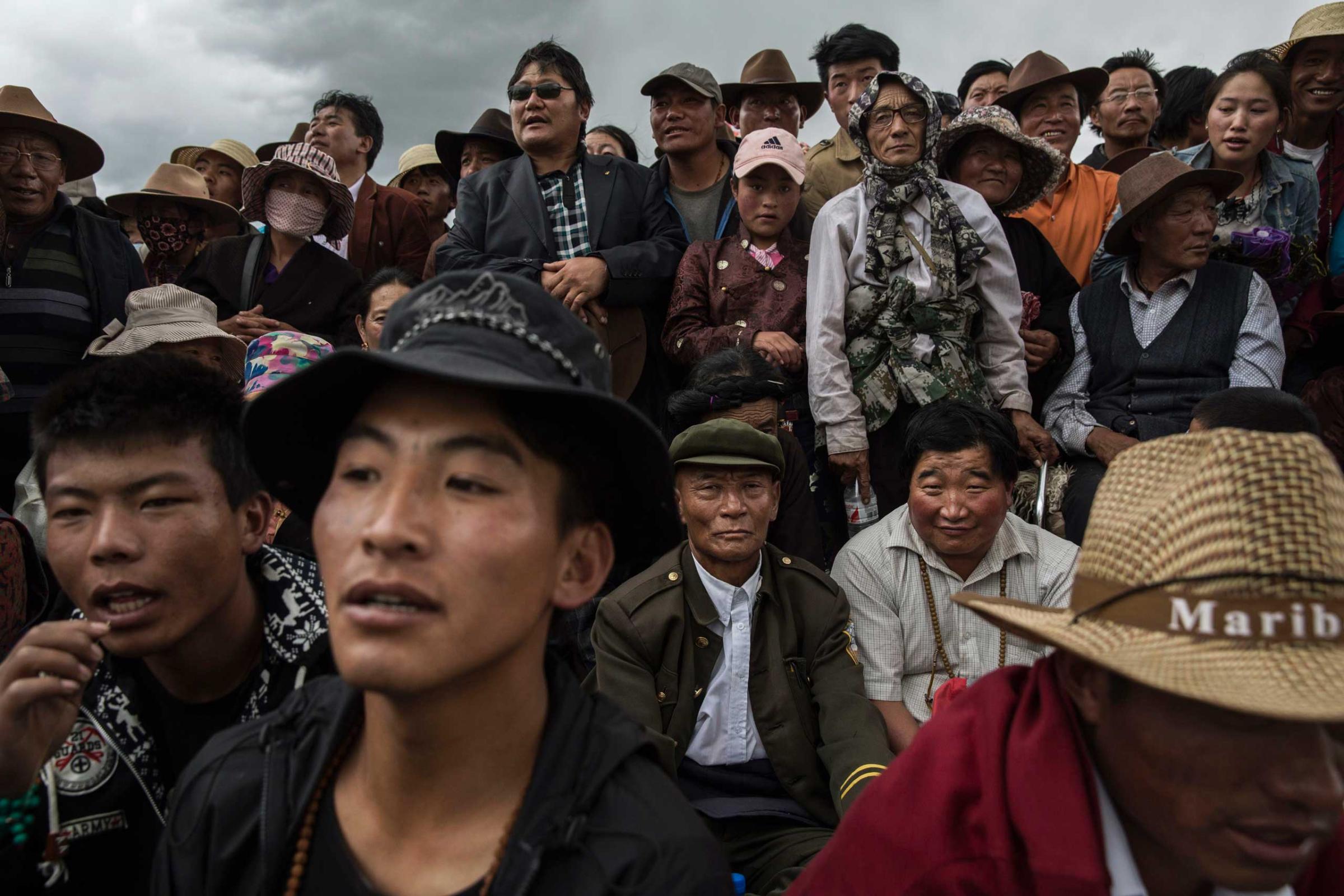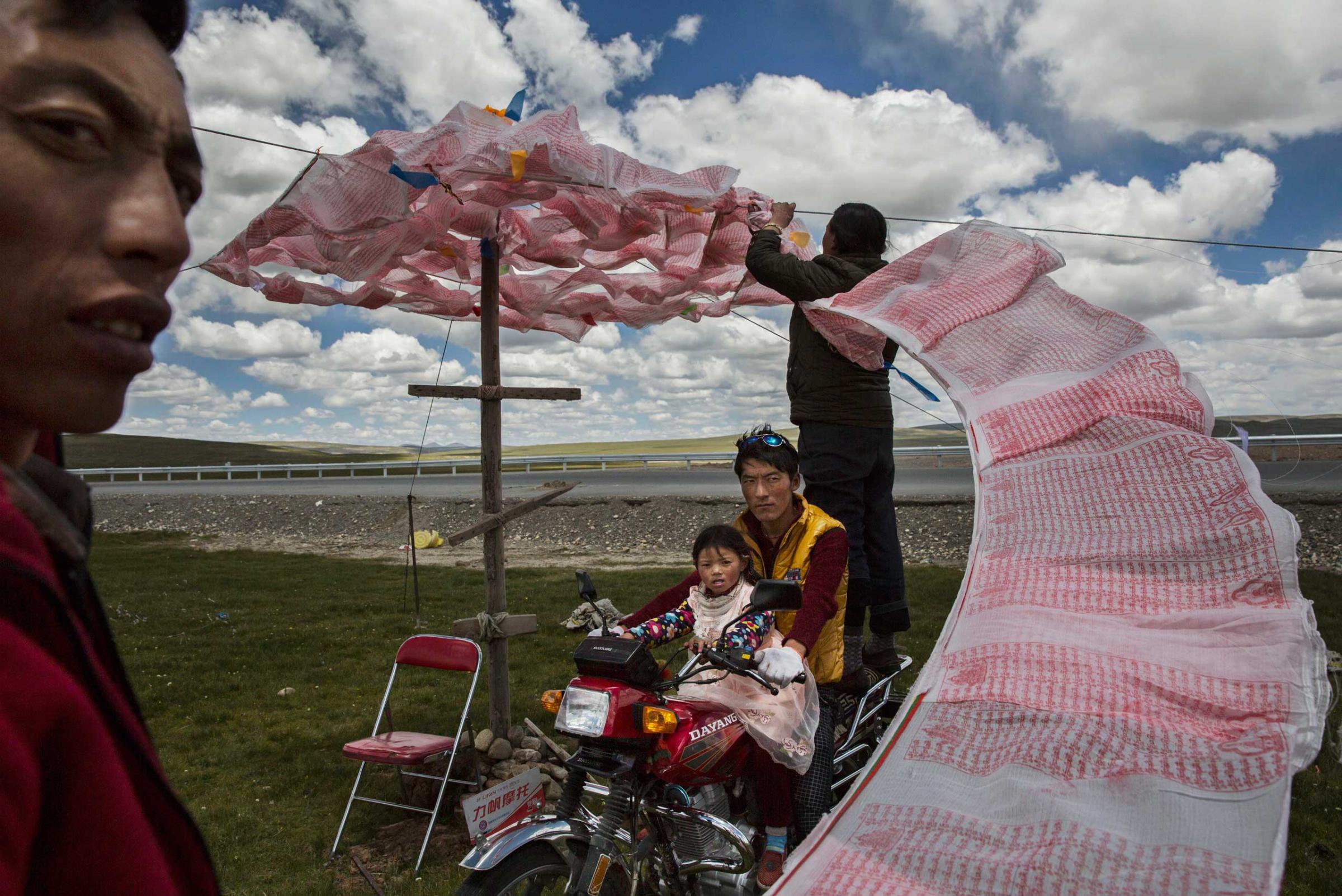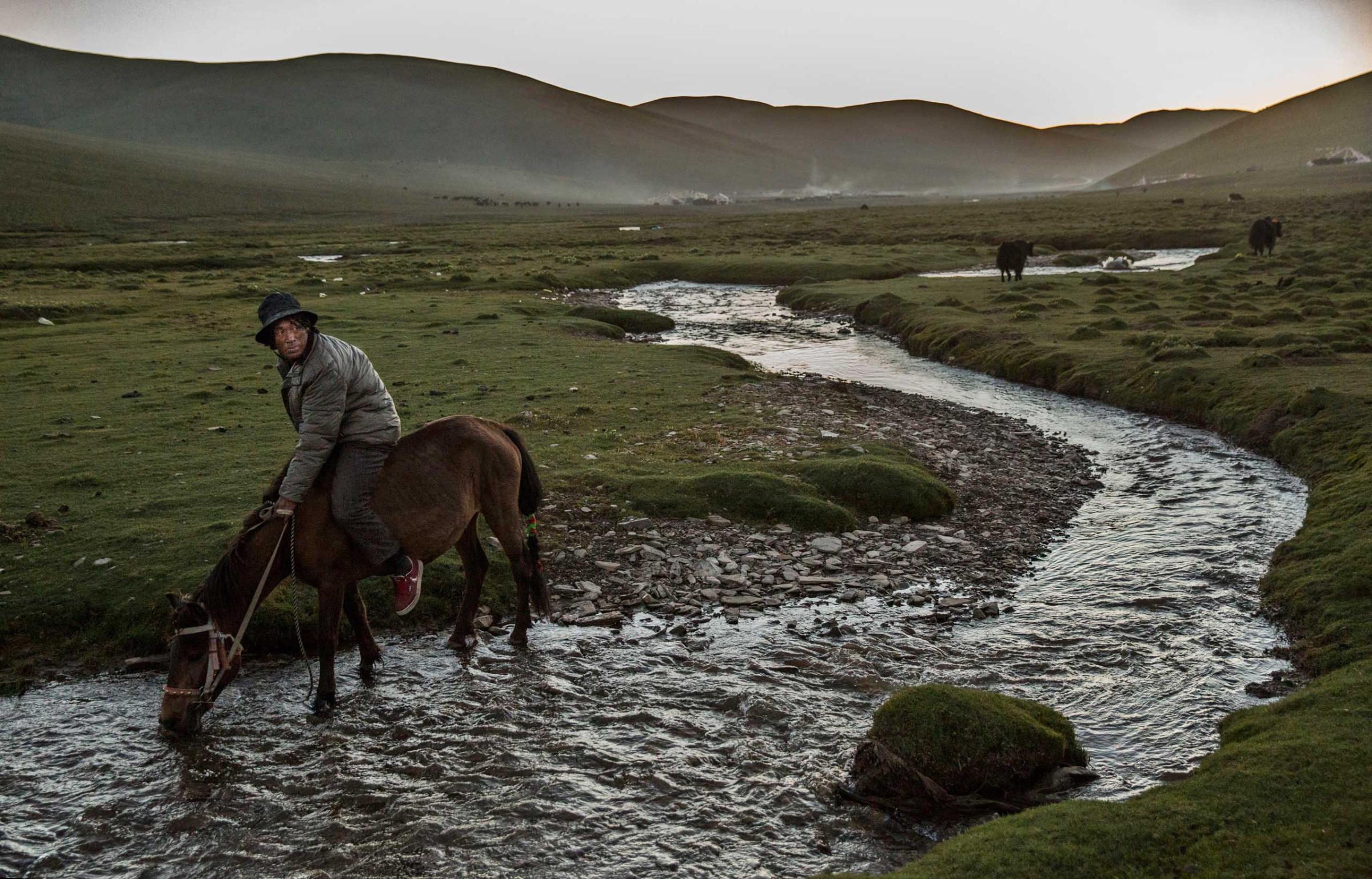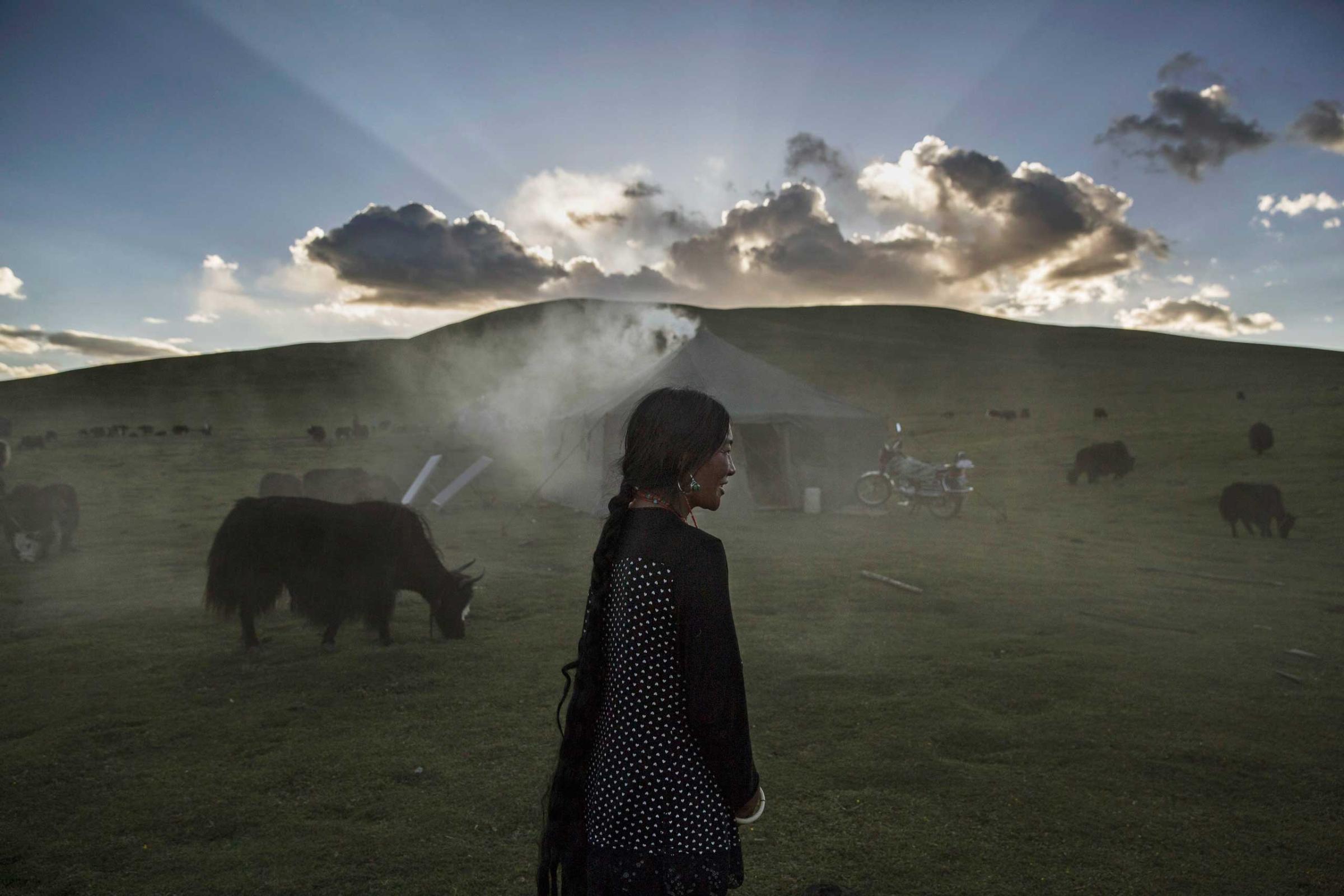
For more than 10,000 years, the Tibetan nomads have roamed freely on the lush grasslands of China’s Tibetan Plateau, also called “the Roof of the World.” But with China’s resettlement programs pushing them out of their homeland, this rare cultural treasure could be the stuff of history books within this decade.
“Once it’s gone, it’s gone and all you have left is fancy dress and color at local festivals for tourists from the big cities to come and see every summer,” says Kevin Frayer, the Getty Images photographer who was among the few granted access to the mountainous regions of China’s Qinghai province.
Frayer has been covering China’s ethnic minorities for more than two years now. In 2014, he documented the life of Uighur Muslims in the ancient city of Kashgar. The following year, he traveled to the mountains of northwestern China to capture the Kazakh Eagle Hunters. And last March, he observed a Buddhist prayer ritual at the edge of the Tibetan plateau. For his latest project, Frayer returned to the plateau to capture the habits, routines and customs of this enduring people. “I was drawn to these people on the fringes of this incredibly large, fast moving, fast changing, kind of difficult country,” he says.
In 2003, the Chinese government launched an initiative that forced the nomads to relocate to urban housing in newly constructed villages across the plateau. The policy was aimed at protecting the headwaters of Asia’s three major rivers — the Yellow River, the Yangtze and the Mekong. These sensitive ecosystems contain rich natural resource deposits that are suffering under a large number of animals that graze in these areas, they claim. While some people see this as a way to protect the ecosystem, others see it as a way for the government to coax people off the land, citing environmentalists who have responded with counter studies that disprove such theories.
As settlements see an influx of Tibetans, the transition is difficult for these nomad-turned-villagers. The government offers herders access to employment, but adjustment is challenging when grazing skills are no longer useful. Education, too, poses cause for concern. Tibetan children are sent to schools that teach Mandarin instead of Tibetan. “Look at what is lost,” says Frayer. “The children lose the history, the ability to sing, to read poetry, to understand folklore, to have an elder tell them a story that they will pass down for future generations.”
It’s not a uniquely Chinese experience. In the early 1930s, the Soviet government drove the Nenets and Khanty reindeer breeders on to newly established collective farms. British policy makers issued an order in 1951 to remove the Tanzanian minority ethnic group Maasai from their savannah rangelands to a conservation area. The Sri Lankan government, too, displaced more than 50,000 members of the country’s minority Tamil population in the 1990s.
“Most minorities in quickly changing landscapes are at risk,” says Frayer. “But it’s happening in China now in 2015.”
His stunning images remind the viewer that the traditions of Tibet’s spirited, hardy people remain a thing not to be forgotten or displaced. While the daily life and background landscapes appear to the westerner as breathtaking, exotic even, it’s rather ordinary for them, says Frayer. “This is something they have been doing for millennia and so for the Tibetan nomad, it’s really quite a simple life.”
For Frayer, a recipient of this year’s Getty Images and Chris Hondros Fund Award, this is only the start of his documentation of the country’s nomadic people. “You need weeks, even months out there,” he says.
Ultimately, he aims to go beyond the stereotypical view of this country as a political machine or a giant of the stock market and global currency markets. “The view of China can’t always be the Mao portrait in Tiananmen Square,” he says. “When at the same time a soldier is standing in front of the portrait, there are 16-year-olds dancing at night clubs and a baby taking its first steps or somebody passing away. Part of your obligation is to tell the story of those people too.”
Kevin Frayer is a freelance photographer represented by Getty Images.
Mikko Takkunen, who edited this photo essay, is an Associate Photo Editor at TIME. Follow him on Twitter @photojournalism.
Rachel Lowry is a writer and contributor for TIME LightBox. Follow her on Twitter @rachelllowry.












More Must-Reads from TIME
- Cybersecurity Experts Are Sounding the Alarm on DOGE
- Meet the 2025 Women of the Year
- The Harsh Truth About Disability Inclusion
- Why Do More Young Adults Have Cancer?
- Colman Domingo Leads With Radical Love
- How to Get Better at Doing Things Alone
- Michelle Zauner Stares Down the Darkness
Contact us at letters@time.com